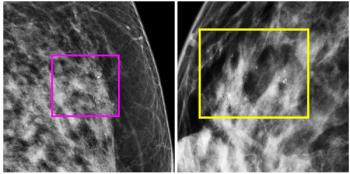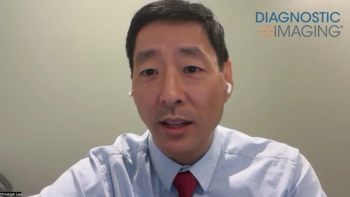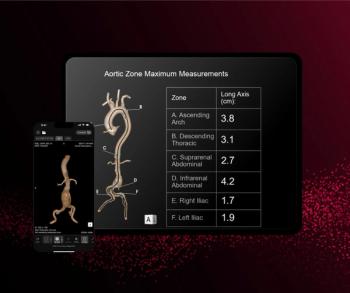
Philips promotes whole-body MRI for 1.5T oncology, vascular exams
Growth into 7T facilitates molecular imagingA whole-body imaging package developed by Philips Medical Systems for its Intera 1.5T is being positioned as a viable alternative to nuclear medicine scans for cancer screening and
Growth into 7T facilitates molecular imaging
A whole-body imaging package developed by Philips Medical Systems for its Intera 1.5T is being positioned as a viable alternative to nuclear medicine scans for cancer screening and evaluation. The package, which allows head-to-toe scanning in less than 10 minutes using a virtual field-of-view of more than two meters, is also being described as the means for obtaining a total vascular examination.
"Philips has played a leading role in expanding angiography to peripheral runoffs through the use of its MobiTrack (moving patient table). With this, we take the concept one step further so that whole-body screening and whole-body imaging can be done from both an angiographic and an imaging point of view," said Jacques Coumans, Ph.D., global marketing director for Philips MR.
Whole-body scans are conducted using the Turbo-STIR acquisition sequence from the Intera's ScanTools software and a whole-body moving platform that fits on the patient support. This platform automatically advances the patient feet first through the scanner.
The company claims that whole-body MR evaluations on the Intera 1.5T for breast, lung, and skeletal cancer produce accuracy equal to or greater than whole-body exams using radiopharmaceuticals, the gold standard for such oncologic assessments.
The package is already in routine use at Cappagh Orthopaedic Hospital in Dublin, Ireland, where one or two cancer patients undergo whole-body scans daily. Dr. Stephen Eustace, radiology director at Cappagh, said the breast, lung, and skeletal tumors are extremely conspicuous on MR scans.
"We don't have to rely on the tumor's activity level to enable its detection," he said. "With one MR scan, it is possible to get a global perception of total tumor burden."
The package can also be adapted for vascular studies. The procedure was proven in clinical tests first begun in December 2001 at Uppsala University Hospital in Sweden using a prototype table extension. Contrast-enhanced MR angiography from head to toe is possible with the system in less than 90 seconds, according to Dr. Hakan Ahlstrom, a professor of radiology at Uppsala University Hospital. He has also used the technique to follow up with patients treated for stenosis and plaque.
The whole-body imaging package exemplifies Philips' commitment to developing the clinical potential of MR, according to Coumans. Philips was the first to put a compact 3T scanner into production. The company expects to push against current limitations further through a collaboration with the University of Nottingham in the U.K. to create a general-purpose 7T version of the Intera. The company is planning an initial run of 10 units, the first of which could be installed as early as mid-2004. Orders for another four are already in hand, and they could be operating by the end of 2006.
At present, there are only three ultrahigh-field MRI installations worldwide, according to Coumans. All were built by university-based research groups using commercially available components. These systems lack the breadth of MR techniques and software capabilities that are available on high-end clinical scanners, such as those in the Intera line, he said. The 7T Intera, however, will be equipped with all these capabilities, including the company's proprietary sensitivity encoding capability.
"We want to be known as pioneers in molecular imaging and, therefore, we have decided that both 3T and 7T are necessary venues for us," Coumans said. "Developing 7T will also allow us to work with top academic institutions."
Newsletter
Stay at the forefront of radiology with the Diagnostic Imaging newsletter, delivering the latest news, clinical insights, and imaging advancements for today’s radiologists.

























